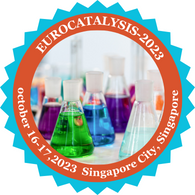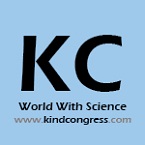Renowned Speakers
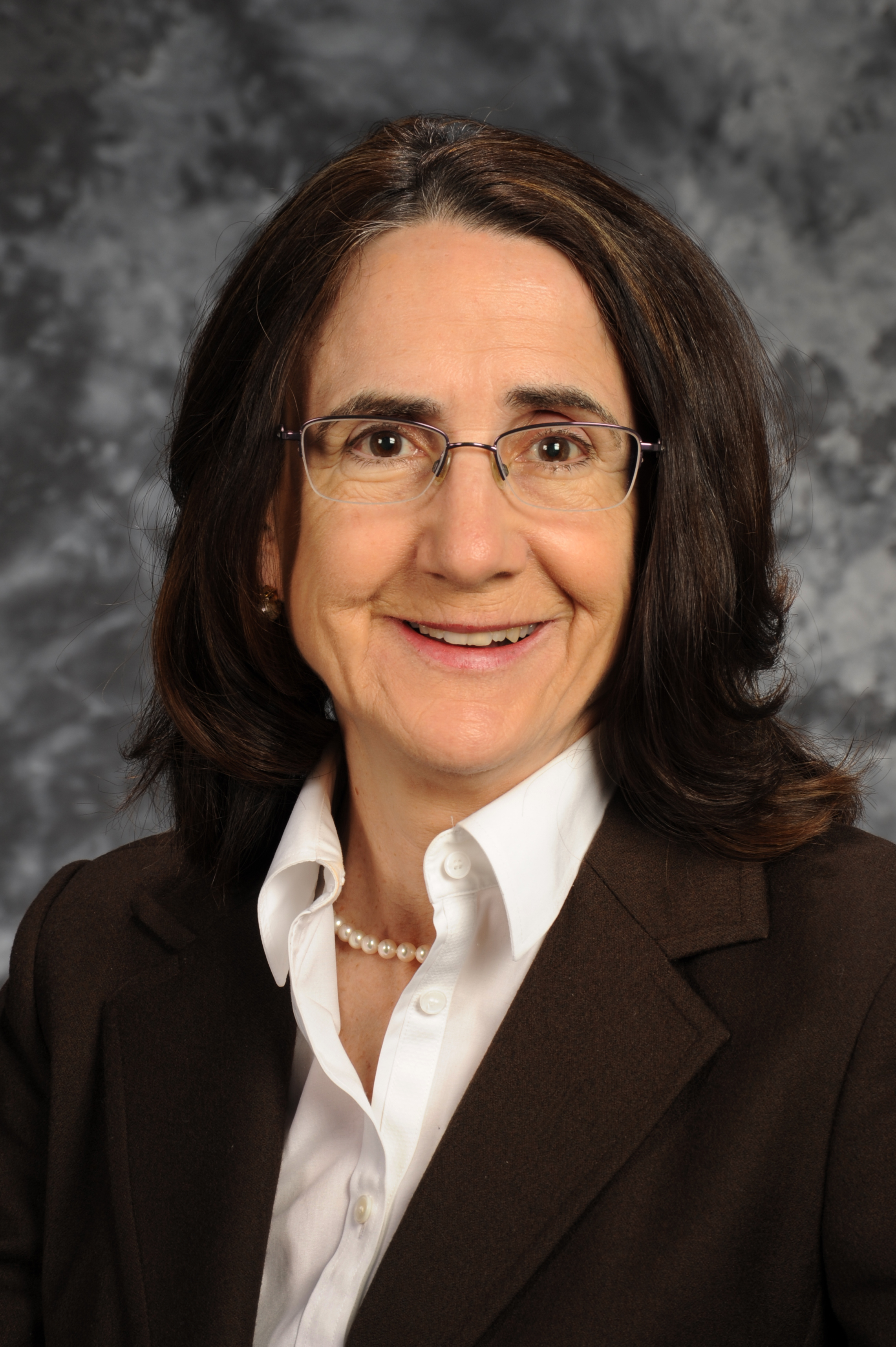
Anne Gaffney (Keynote Speaker)
Idaho National Laboratory(INL), USA

B. Frank Gupton (Keynote Speaker)
Virginia Commonwealth University, USA

M. Samy El-Shall (Keynote Speaker)
Virginia Commonwealth University, USA

Bunsho Ohtani (Keynote Speaker)
Hokkaido University, Japan

Liliana Rubio
PMO Polymer Business Intelligence, Brazil

Tadayuki Imanaka
Ritsumeikan University, Japan
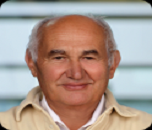
Jean Marie Basset
King Abdullah University of Science and Technology, Saudi Arabia

Akira Nishimura
Mie University, Japan
Recommended Global Chemistry Webinars & Conferences
Europe & UK
Asia Pacific & Middle East
Canada
Eurocatalysis-2023
About Conference
About Conference:
The Conference Series LLC Ltd is delighted to invite you to the “11th International Conference on Catalysis and Chemical Engineering”, taking place at Singapore on August 21-22, 2023 Singapore City. The conference was titled " EUROCATALYSIS-2023".
Catalysis and chemical engineering are two of the experimentally demanding and philosophically interesting areas of contemporary chemical research. The most fascinating issues in this multidisciplinary field lie at the interface between chemistry and engineering. The international conference will bring together top academics and business leaders from across the world to discuss the most recent advancements and make predictions about the future of the discipline. These experts coming together at one conference offers a great chance to discuss the connections between basic and applied research. In-depth talks and the ability to forge new cross-cutting partnerships in your area of interest are made possible by the format's special features.
Attending this revolutionary conference is the first step if you're eager to discover the breakthrough in catalysis and chemical engineering and enjoy the greener pastures of professional progress, international recognition, and a respectable reputation.
Benefits:
The subject of the 2023 Catalysis and Chemical Engineering Conference will be highlighted. An annual conference called Scientific Advancements and breakthroughs in Catalysis & Chemical Engineering largely focuses on these fields, their methods, and advancements.
- Recent developments in catalysis for use in generating energy, protecting the environment, and creating new materials, petroleum chemicals, and fine chemicals;
- Scientific basis for the creation and activation of commercially useful catalysts or their model representations;
- Spectroscopic techniques for structural characterization, particularly in situ techniques;
- New theoretical techniques with potential for application and influence in the study of catalysis and its applications;
- Homogeneous and heterogeneous catalysis's relationship.
- Theoretical investigations on the reactivity and structure of catalysts.
Target Audience:
- Catalysis Researchers
- Chemical Engineering Professionals
- Research faculties Academic Scientists
- Chemical Engineering Students
- Biochemical Engineers
- Polymeric Engineers
- Chemical Engineering Associations and Societies
- Chemical laboratory professionals
- Start-ups
- Exhibitors
- Business Entrepreneurs Associations and Collaborations
- Industry Professionals
- Software Developing Companies
- Marketing, Advertising and Promotion Agency Executives
Key Elements:
- Professional Perspective
- Scholars Recognized Globally, New Technologies Are Emerging
- Abstracts are published in conference proceedings.
- Deep Learning and Knowledge Exchange
- being made aware of future business trends
- fostering academic dialogue, evaluating research, and disseminating findings from that research
- Certificate of Participation with Foreign Signatories
- Find, Present, and Delight
Conference Opportunities:
Conference Opportunities:
For Researchers and Faculty Members:
Speaker Presentations
Poster Display
Symposium hosting (4-5 member teams)
Workshop organizing
For Universities, Associations & Societies:
Association Partnering
Collaboration proposals
Academic Partnering
Group Participation
For Students and Research Scholars:
Poster Competition (Winner will get Best Poster Award)
Young Researcher Forum (YRF Award to the best presenter)
Student Attendee
Group registrations
For Business Delegates:
Speaker Presentations
Symposium hosting
Book launch event
Networking opportunities
Audience participation
For Product Manufacturers:
Exhibitor and Vendor booths
Sponsorships opportunities
Product launch
Workshop organizing
Scientific Partnering
Marketing and Networking with clients
Tracks Sessions
Track 1: Chemical Kinetics and Catalytic Activity
Chemical kinetics is the study of reaction rates with the goal of determining the kinetic mechanisms behind the chemical transformation of reactants (R) into products (P). Although the pace of a chemical reaction is often measured in seconds, kinetics experiments might extend for minutes, hours, or even days.
An enzyme or other catalyst's ability to speed up a chemical process under specific test circumstances is known as catalytic activity. The units of measurement are katals or moles per second. The catalyst activity and reaction process are significantly impacted by the type of support.
Track 2: Analytical Methodologies
An analytical methodology is a process or a method for analyzing a situation, a condition, or a piece of information. The scope and duration of analytical procedures are often constrained. They are employed just once to address a particular problem. Opposed to organizational management techniques that have a long-term impact. Managers and analysts utilize a multitude of very straightforward analytical procedures in the course of their daily job. Usually without mentioning it in any way. For these methods, a simple "paper-pencil" system or other standard office supplies are frequently sufficient. They are mostly dependent on the user's experience with them. There are also a variety of specialised analytical methods, most of which are based on mathematical models or call for specific tools.
Track 3: Heterogeneous Catalysis
Heterogeneous catalysis, as used in chemistry, is catalysis in which the phases of the catalysts and the reactants or products are different. In contrast, in homogeneous catalysis, the catalyst, reactants, and products are all present in the same phase. Phase can differentiate between components that are solid, liquid, or gas, as well as immiscible mixes (like oil and water), or any location where an interface is present.
Track 4: Homogeneous Catalysis and Molecular Catalysis
When it comes to activity and selectivity, homogeneous catalysts—typically organometallic complexes—have a well-known high efficiency. They are also active in a wide range of reaction conditions. They fall short, though, in how simple it is to remove the catalyst from goods. As a result, heterogeneous catalysts
Track 5: Catalysis for Water Treatment
A competitive substitute for traditional water treatment methods might be catalytic processes. Compared to conventional bioremediation-based technologies, they are less operationally sensitive and have substantially quicker kinetics. They do not transfer pollutants into distinct, more concentrated waste streams, in contrast to other traditional water treatment methods (such as ion exchange, reverse osmosis, and activated carbon filtering).
Track 6: Catalysis in Nanotechnology
In order to improve the catalytic process, nanomaterial-based catalysts are typically heterogeneous catalysts that have been divided into metal nanoparticles. High surface area metal nanoparticles can boost catalytic activity. Catalysts made of nanoparticles may be readily recycled and separated. They are mainly employed in moderate environments to stop the nanoparticles from disintegrating.
Track 7: Organometallics
Organometallic chemistry is the study of organometallic compounds, which are chemical compounds containing at least one link between an atom of an organic molecule and a metal. These metals include transition, alkaline, and alkaline earth metals, as well as metalloids like boron, silicon, and tin.
Track 8: Organocatalysis and Bioinorganic Chemistry
The term "organocatalysis" in organic chemistry refers to a type of catalysis where a substance made of carbon, hydrogen, sulphur, and other nonmetal elements present in organic compounds acts as an organic catalyst to speed up chemical reactions.
In an effort to comprehend the biological functions of the chemicals that carry living processes, bio-organic chemistry investigates these compounds. A subfield of science called bioinorganic chemistry examines how metals function in living things. Both naturally occurring phenomena, including the activity of metalloproteins, and chemically added metals, including those that are non-essential, in medicine and toxicity are studied in bioinorganic chemistry.
Track 9: Fermentation, Biocatalysis and Biotransformation
In order to accelerate chemical processes, natural materials such as enzymes from biological sources or complete cells are referred to as "biocatalysts." Hundreds of processes are catalyzed by enzymes, including the fermentation-based generation of alcohols and the breakdown of milk proteins into cheese. An agent (such as an enzyme or hormone) that starts or hastens biological processes is referred to as a biocatalyst. For instance, digestive enzymes like pepsin and trypsin.
Track 10: Green Chemistry
Sustainable chemistry, sometimes known as "green chemistry," is a branch of chemistry and chemical engineering that focuses on developing goods and procedures that reduce or completely do away with the usage and production of harmful compounds. While environmental chemistry focuses on how chemicals that pollute the environment affect the environment, green chemistry focuses on how chemicals affect the environment, including reducing the use of non-renewable resources and developing technological solutions to avoid pollution.
Track 11: Environmental Catalysis
The scientific study of chemical and biological events that take place in the environment is known as environmental chemistry. It shouldn't be mixed up with green chemistry, which aims to stop pollution before it starts. It is the study of the origins, processes, movements, outcomes, and destinies of chemical species in the air, soil, and water environments, as well as the impact of biological and human activities on these. In addition to extensively depending on analytical chemistry, being connected to environmental and other fields of research, and including atmospheric, aquatic, and soil chemistry, environmental chemistry is an interdisciplinary field of study.
Track 12: Photochemistry, Photobiology and Electrochemistry
Photochemistry is the category of chemistry treated with the chemical effects of light. Commonly, this phase is used to describe a chemical reaction influenced by the absorption of ultraviolet (wavelength from 100 to 400 nm), visible light (400–750 nm), or infrared radiation (750–2500 nm).
Photobiology is mainly defined to cover all biological aspects including non-ionizing radiation. It is noticed that photo biological responses are the result of chemical and/or physical variations induced in biological systems by non-ionizing radiation.
Electrochemistry is the knowledge of electricity and how it compares to chemical reactions. In electrochemistry, electricity can be produced by actions of electrons from one element to another in a reaction is called redox or oxidation-reduction reaction and it is the part of chemistry involved with the interrelation of electrical and chemical variations that are produced by the passage of current.
Track 13: Polymer Engineering
Engineering that creates, analyses, and alters polymer materials is often referred to as polymer engineering. Petrochemical industrial features, polymerization, structure and characterization of polymers, characteristics of polymers, compounding and processing of polymers, descriptions of key polymers, structure-property connections, and applications are all covered by polymer engineering.
Track 14: Material Sciences
Materials scientists place a strong emphasis on comprehending how a material's processing history affects its structure, and subsequently, its characteristics and functionality. The materials paradigm describes how links between processing, structure, and characteristics are understood. This paradigm is utilized to expand knowledge in a number of fields of study, including metallurgy, nanotechnology, and biomaterials.
Track 15: Quantum Chemistry
The field of physical chemistry known as quantum chemistry, also known as molecular quantum mechanics, focuses on the application of quantum mechanics to chemical systems, especially towards the quantum-mechanical calculation of electronic contributions to physical and chemical properties of molecules, materials, and solutions at the atomic level. In order to make the calculations computationally feasible while still preserving as much information about significant contributions to the computed wave functions and to observable properties like structures, spectra, and thermodynamic properties, these calculations incorporate methodically applied approximations.
Track 16: Petrochemical Engineering
Geophysics, petroleum geology, formation evaluation (well logging), drilling, economics, reservoir simulation, reservoir engineering, well engineering, artificial lift systems, completions, and petroleum production engineering are just a few of the many related fields that petroleum engineers need to be well-versed in.
Track 17: Enantioselective Catalysis and Computational Catalysis
Chemical synthesis includes enantioselective synthesis, often known as asymmetric synthesis. According to the IUPAC, it is "a chemical reaction (or reaction sequence) in which one or more additional chiral elements are produced in a substrate molecule and which creates the stereoisomeric (enantiomeric or diastereomeric) products in uneven proportions."
Track 18: Industrial Catalysis and Process Engineering
Catalysis is crucial to both industrial research and the chemical industry. To meet needs in the economic, political, and environmental spheres, various catalysts are constantly being developed. A catalyst can be used to switch out a chemical reaction that pollutes the environment with one that is better for the environment. This can be crucial for the chemical industry both now and in the future. Additionally, it's critical for a business or researcher to keep track on market development. If a firm's catalyst is not enhanced continuously, another company may advance in its research and capture market share. A new and improved catalyst may be a tremendous asset for a business in terms of competitive production costs.
Track 19: Electrolysis and Corrosion
A refined metal undergoes natural corrosion, which changes it into a more stable oxide. By reacting chemically or electrochemically with their surroundings, materials (often metals) slowly deteriorate. The discipline of corrosion engineering is focused on managing and avoiding corrosion.
Electrolysis is the process of changing a substance's chemical composition by passing an electric current through it. An electron is either lost or gained during the chemical transformation, depending on the material (oxidation or reduction).
Track 20: Plasma Catalysis
Plasma is electrically conductive due to the existence of charged particles. The dynamics of individual particles and macroscopic plasma motion are controlled by collective electromagnetic fields, and both are extremely sensitive to externally imposed fields. Many contemporary technical innovations, such plasma TVs and plasma etching, make advantage of the plasma's electromagnetic field response.
Track 21: Photocatalysis and Photoreactors
A photon's absorption in solid results in a photochemical process known as photocatalysis. The substance known as the "photocatalyst" is unaltered throughout the process. The photocatalytic reactor is frequently utilized in research and development, academic institutions, businesses, and other similar settings. It is primarily employed for the production of aflatoxin, degradation of pollutants in aqueous solutions, and improved detection.
Track 22: Catalysis for Biorefineries
A facility that blends conversion processes and low-impact technologies to create fuels, electricity, and chemicals from biomass is referred to as a biorefinery.
Future bio refineries will incorporate a number of low-environmental impact (bio) chemical processes and technologies. In this context, using aqueous-phase processing and ecologically friendly methods, heterogeneously catalyzed reactions will play a crucial role in the conversion of the so-called platform molecules into essential chemicals, biofuel precursors, and energy.
To produce biofuels and bio-based chemicals, integrated bio refineries use a variety of biomass feedstock’s and their corresponding conversion methods. A significant portion of industrial chemicals and materials made from fossil fuels may be replaced with bio-based chemicals.
Track 23: Advances in Catalysis and Chemical Engineering
Chemical engineering is a branch of engineering that focuses on strategies for increasing output as well as the operation and design of chemical facilities. Chemical engineers create cost-effective industrial processes that transform raw resources into usable goods. To effectively use, create, design, transport, and change energy and materials, chemical engineers apply ideas from physics, arithmetic, biology, and economics. Chemical engineers can work on everything from large-scale industrial processes that transform chemicals, raw materials, live cells, microbes, and energy into usable forms and products to the use of nanotechnology and nanomaterial’s in the laboratory.
Track 24: Physical Chemistry
Contrary to chemical physics, physical chemistry is mostly (though not always) a supra-molecular science since most of the underlying concepts concern the bulk rather than just the molecule or atomic structure (for example, chemical equilibrium and colloids).
Track 25: Catalysis in oil and gas
An internal combustion engine's exhaust gas contains poisonous gases and other pollutants that a catalytic converter transforms into less-toxic pollutants by accelerating a redox process. Typically employed with internal combustion engines powered by gasoline or diesel, including lean-burn engines, catalytic converters are also occasionally utilized with kerosene heaters and stoves.
Track 26: Surface and Colloidal Phenomena
Surface Chemistry deals with aspects that occur at the surfaces or interfaces. The interface or surface is by separating the majority phases by a hyphen or a slash. For instance, the interface within a solid and gas may be described by solid-gas or solid/gas. Surface Chemistry has a major role in various chemical processes such as enzymatic reactions at the biological interfaces detected in the cell walls and membranes. In the electronics industry, the use in surface and interface of microchips used in computers.
Market Analysis
According to the development, the chemical industry will gradually increase between 2013 and 2020, growing by just a little over a trillion dollars in the years leading up to 2020 due to the continued stagnation of the global economy and the downturn in the Chinese economy. Although the Chinese market grew by 25% between 2003 and 2013, it is predicted to decrease by 2/3 to 8% by 2020. As a result, it is anticipated that by 2020, the Chinese market would be worth around $2 trillion. From the almost three percent growth the European market experienced between 2003 and 2013, growth will only slightly decline to 2 percent through 2020, amounting to only $13 billion at that point. The North American market is expected to increase at a rate of 4% through 2020, reaching around $800 billion.
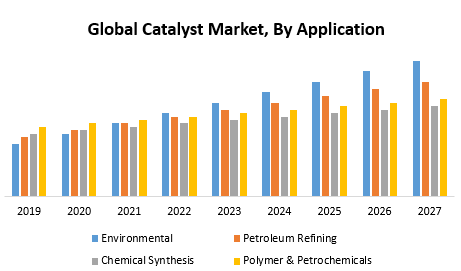
To Collaborate Scientific Professionals around the World
Conference Date October 16-17, 2023
For Sponsors & Exhibitors
Speaker Opportunity
Useful Links
Past Conference Report
Supported By
All accepted abstracts will be published in respective Conference Series International Journals.
Abstracts will be provided with Digital Object Identifier by
